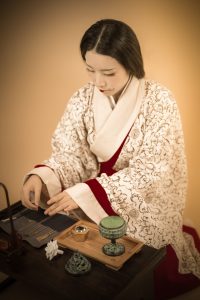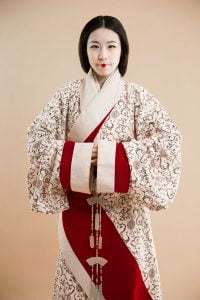Your cart is currently empty!
Han Dynasty–Silk, Incense & Confucianism

The Han dynasty was a golden period of great prosperity and development in Chinese history. To this day, China’s majority ethnic group refers to themselves as the “Han people”, the Chinese script is referred to as “Han characters” and the traditional dresses worn by the Han people is thus called “Hanfu”.
Because not everyone has the time to research in-depth about the period, I’m going to use quick snippets of info so at one glance, you can guess with 90% accuracy if someone’s from Han dynasty.
Silk Road
Of course the concept of migration and trade existed for a long time but Han dynasty formally established connections with India, Persia, and even Rome! Many things were traded via this road including incense, spice, silk. This is an important route that continues to influence how the Chinese culture evolves, with influences from the West and surrounding.
China held monopoly to silk, cos nobody at that time knew how to produce silk. While China had its own incense (since gazillion years ago), they also imported incense from India during Han dynasty and used in daily functions such as scenting of their bedsheets and rooms. While many associate incense with taoism or buddhism, in those days, it was really something that functioned like our perfume or air refreshener! Buddhism at that time was not popular in China (it was JUST introduced to China, and all the scriptures weren’t translated in understandable Chinese forms), and it was Confucianism that maintained the order of society.
A popular incense burner of that period was the Bo Shan Lu which took on the sophisticated form of a mountain with trees and creatures. When the incense started burning, smoke would scape from the holes, making it look like an actual spirit mountain kind of creation where mythical creatures were half-concealed and half-revealed. Quite a piece of art.
Long hair hanging secured at the back

Like our model, the hair is usually really simple, with hair gathered at the back and tied in a knot. Centre parting.
I get asked about this a lot, whenever girls come over for photos: Do women in the past really have so much hair!?!
Well, this hairstyle is really simple, and it is definitely do-able with just your own hair. My Han dynasty Hanfugirl has hair up till her hip, and I didn’t need to do much except to just tie them up into a small knot, secured with a string.
But, there were other more complex hair during Han dynasty, and those were made of wigs. The use of fake hair during Han dynasty was limited only to royalties/people of higher social status. It was part of the dress code based on social standing. If you think it’s really just theories, you’d be surprised–actual wigs were dug up from artefacts of that period! So wigs has been around for at least 2000 years!
Wraparound one-piece robe
 Robes were worn by men AND women prior to Han dynasty, and during Han dynasty, it developed into a more fanciful wrap-around robe that had a triangular cut. Both this style of robe, as well as the hairstyle secured at the back was iconic of this period, and you hardly see any such styles (if at all!) for the later periods.
Robes were worn by men AND women prior to Han dynasty, and during Han dynasty, it developed into a more fanciful wrap-around robe that had a triangular cut. Both this style of robe, as well as the hairstyle secured at the back was iconic of this period, and you hardly see any such styles (if at all!) for the later periods.
So if you see anything that looks like this style, it’s got to be Han dynasty, and before. In subsequent eras, this hairstyle fell out of favour as women opted to wear their hair high.
Make-up & Accessories
Women throughout Chinese history, with the exception of Tang Dynasty often like to have their eyebrows thin and long. Lips during Han dynasty also took the form of a cherry. Round red dots are also dotted at the side of the lips. In ancient dynasties, this was used in the ancient courts as a subtle way of indicating that the concubine was having her period, so the maiden-in-charge would not call upon these concubines to serve the emperor.
Just like wigs were meant for the privileged class, so was make-up! Make-up used to be in the forms of powder.
Due to the strong emphasis of filial piety in Confucian teaching, Han men and women did not cut their hair or have any piercing of sorts after the coming of age ceremony because they believed that the human body was gifted by their parents, and one must treat it with utmost respect. This is also why Chinese women of that time would typically not have any earring unless they were of non-Han ethnic origin.
So there you go, be sure to be able to identify a 2000 year old Chinese lady the next time you see one! 😛
Post-edit:
OH! I forgot to mention, when I went to Japan the last time, I realised that the maiden in Japanese Shrines (Miko) had very similar hairstyle as the Han Chinese period women, even the accessories on the head is similar. While I’m no historian, I can’t say for sure but I do believe that there is likely to be influences from China through Silkroad, since Japan was at the Eastern end of the Silkroad.
Also, the set of tools for incense only came about much later, as the use of incense became more sophisticated and more of an art form than for daily use.

Leave a Reply